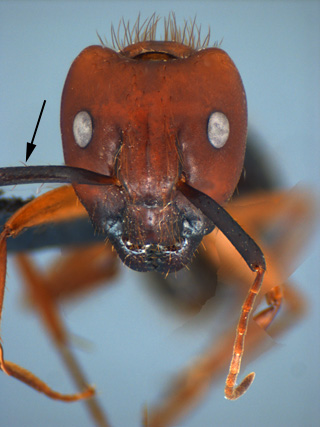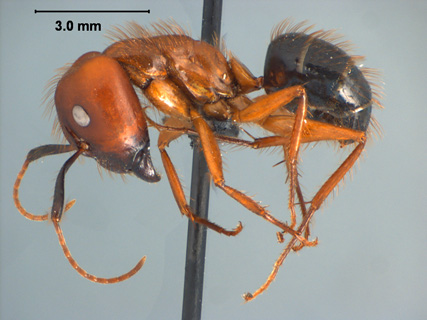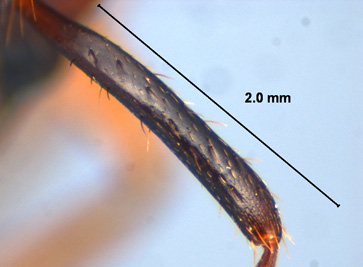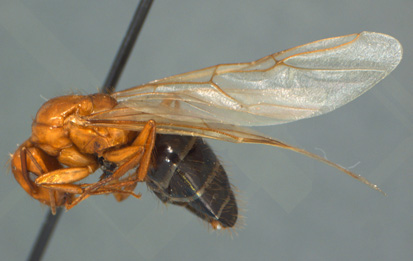Camponotus floridanus, full face view of a major worker. |
Camponotus floridanus, profile view of a major worker. |
Camponotus floridanus (Buckley), close up view of the scape showing erect hairs. |
Camponotus floridanus (Buckley), profile view of an alate queen. |
Introduction
Ants in the genus Camponotus are collectively known as carpenter ants because some species nest in wood, including man-made structure. This genus includes some of the largest and most common ants in the world, and they are found in all biogeographical regions (Bolton, 1995). More than 900 species of Camponotus are known worldwide, with 50 species reported from the United States (Hanson and Klotz, 2005), and 20 species found east of the Mississippi River (Deyrup, 2003; Smith, 1979).
Species in this genus are variable in size with workers ranging in size from 3 to 15 mm or more in length and queens (also referred to as females) of some species attaining a length of 19 mm or more. Many species are polymorphic. Workers have a 12-segmented antenna that lacks an apical club. Antennal fossae do not touch the posterior border of the clypeus. Ocelli are not present on the heads of workers. The workers of most species have an indistinct metanotal suture between the promesonotum and the propodeum, although this suture is present in C. sexguttatus and some members of the subgenus Colobopsis. Those species that lack the obvoius and deep metanotal suture have the shape of the alitrunk in a smoothly curved arc (as seen in profile).
Identification
Camponotus floridanus(Buckley) in the subgenus Myrmothrix, is an average to large sized ant ranging in size from about 6.5 to 11 mm in overall length. This species is very distinctive from any other carpenter ant found in this area and can be recognized by its having erect hairs present on the antennal scapes. This species has a reddish head, alitrunk, and petiole, and a blackish to black gaster. C. floridanus is similar to C. socius in that it also has many long erect hairs on the head and body, but differs in that it is very shiny (rather than opaque) has a black gaster (instead of a banded gaster), and has the erect setae on the scapes that are lacking in C. socius.
Biology and Economic Importance
This ant occurs in the southern portions of both AL and MS in sandy soils. It is known to nest in the soil under rotting logs and stumps.
Distribution
Literature Cited
Links
AntWeb Images
Discover Life Images |






